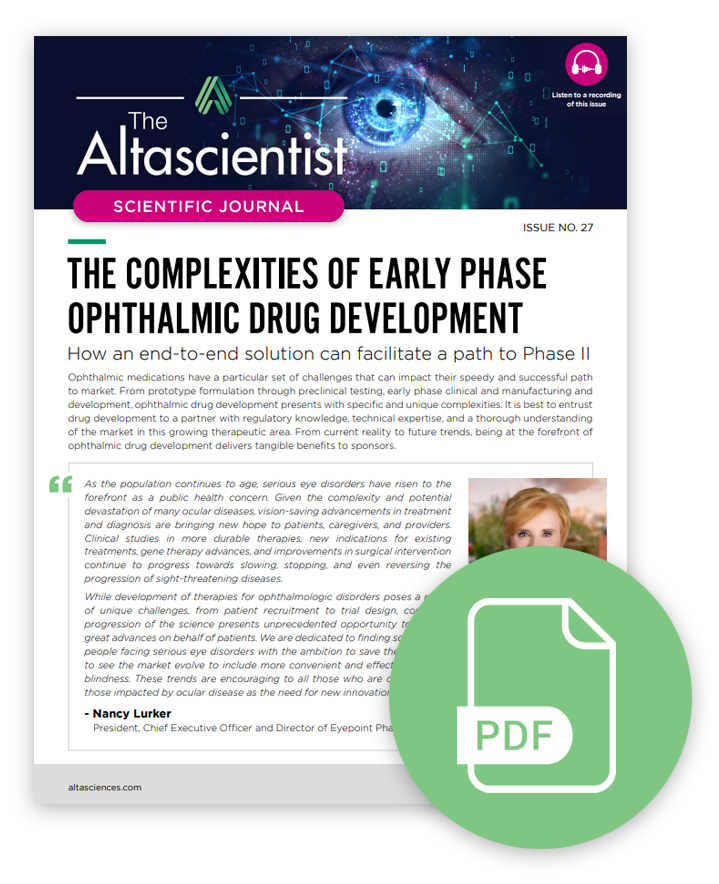ISSUE NO. 27 — The Complexities of Early-Phase Ophthalmic Drug Development

Ophthalmic medications have a particular set of challenges that can impact their speedy and successful path to market. From prototype formulation through preclinical testing, early-phase clinical and manufacturing and development, ophthalmic drug development presents with specific and unique complexities. It is best to entrust drug development to a partner with regulatory knowledge, technical expertise, and a thorough understanding of the market in this growing therapeutic area. From current reality to future trends, being at the forefront of ophthalmic drug development delivers tangible benefits to sponsors.
In Issue 27 of The Altascientist, we dive into all areas of ophthalmic drug development, including:
• Prototype development, formulation, and manufacturing
• Preparing for first-in-human studies
• Species and strain selection parameters
• Routes of administration
• Specialized ocular assessments and equipment
• bioanalysis
• Phase I clinical research
• Phase II to commercialization
Three case studies are also included!
Navigating the Complexities of Ophthalmic Drug Development
The global market for ophthalmic drugs was valued at USD 36.7 billion in 2020, according to Grandview Research. The compound annual growth rate (CAGR) is expected to be 6.4% from 2021 to 2028. The acceleration in market growth is influenced by increasing awareness of eye-related diseases and advancements in related technology. The aging of the population, as well as the impact of COVID-19 ocular involvement, are also contributing factors. Certain ocular diseases are quite rare, whereas others, such as cataracts, age-related macular degeneration (AMD), and glaucoma, are very common, especially in the aging population.
Drug development in the ocular space has specific challenges. The eye is a multi-faceted organism and has many barriers to drug delivery. Formulation and delivery options must be expertly planned and developed to overcome those barriers and ensure that the maximum bioavailability is achieved without negatively impacting vision or the physical structure of the eye. Planning of preclinical studies must consider the appropriate animal species for the route of administration and therapeutic area of the investigational drug. Some species are more appropriate for certain routes of administration, while others have relevant retinal mutations that can be leveraged in ocular development.
Clinical trials need to be carefully designed by knowledgeable specialists with significant ophthalmic experience. The delicate nature of the eye and the importance of subject safety are key considerations. Just as importantly, the bioanalysis of trial samples necessitates the use of bioanalytical techniques created especially for the often uncommon and frequently fragile matrices involved. Finally, understanding the regulatory environment and related guidances, as well as proactive and appropriate discussions with relevant agencies when warranted, are critical components of the pathway and can help ensure a seamless experience.
Explore all issues of The Altascientist in our Resource Center. And don’t forget to subscribe to “The Altascientist: Audiobooks” on Spotify, Apple Podcasts, or wherever you get your audio content.
Download publication